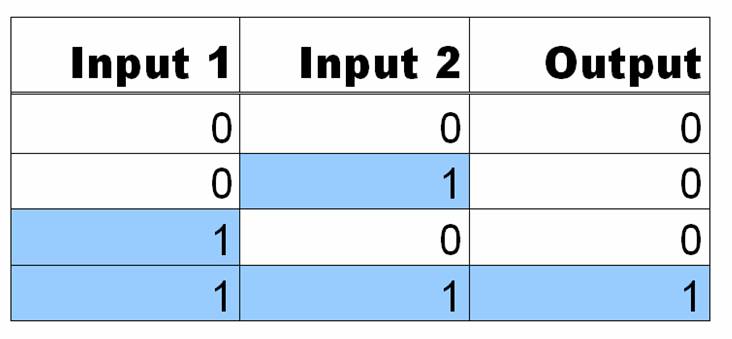Team:Minnesota/Project
From 2009.igem.org
| Home | The Team | The Project | Parts Submitted to the Registry | Modeling | Parts Characterization | Notebook |
|---|
Contents |
The Project
AND Gates
How it works
We studied the potential of a synthetic, single promoter AND gate. This helps us understand at a fundamental level what is happening in a network with multiple regulators and opens further research paths. The device consists of parts of the Tet (tetracycline) and Lac (lactose) and responds to commonly used inducers IPTG (Isopropyl β-D-1-thiogalactopyranoside) and aTc. Three or fewer of these operators can be combined to form a promoter and the order and quantity of each operator site result in different constructs, that is, given three blank spots for operators on a promoter and the choice of either -, T or L for each spot, there are a variety of possible promoter designs. We chose to focus on four constructs:
- T T L
- T T -
- T - -
- - T -
We also examined 4 mutations in the Tet operator site for each construct.
The Experiments
Results
Protocols: Standard techniques that we used in the wet lab
Bacterial Culture
Sterile Technique
- Always work around a flame or in the hood
- Flame the mouth and cap of any bottle, flask or tube upon uncapping and recapping
- Sterilize metal instruments between uses by dipping in 100% ethanol and flaming
Bacterial Culture Maintenance
Culture cells:
- At 36 degrees Celsius
- Shaking at 220 rpm
- At 10% total flask/tube volume
- In mid-log phase(0.1 < OD600 <= 0.4) (with OD600 = 1 ->8.8x108cell/ml)
Bacterial Culture For Gene Expression Experiments
- Pick and individual colony from a plate and inoculate 2ml LB + amp media
- Incubate overnight at 37 C, shaking at 220 rpm
- Inoculate fresh media with overnight culture such that new culture has 2.5% inoculum; this is the secondary culture
- Incubate at 37 C shaking at 220 rpm until OD600 = 0.4 (~2 hrs)
- Inoculate 4 ml LB + amp + inducer (aTc or IPTG) with 100ul secondary culture
- Continue cultures as described above in "bacterial culture maintenance" for 9 hrs
- Isolate cell samples from cultures at 3, 6, and 9 hour time points
- Remove 100ul sample aliquots from cultures
- Pellet samples at 5K rpm for 5 minutes
- Remove supernatant
- Wash cells with 1 ml chilled 1xPBS, pH 7.6
- Resuspend cells by vortexing
- Re-pellet cells at 5K rpm for 5 minutes
- Remove supernatant
- Fix cells; resuspend cells in 1 ml 4% PFA (in PBS)
- Incubate at RT for 30 minutes
- Pellet cells at 5K rpm for 5 minutes
- Remove supernatant
- Resuspend cells in 1 ml 1xPBS
- Store samples at 4 C until analysis by flow cytometry
Transformation of Chemically Competent Cells
- Thaw cells and incubate transformant DNA in ice(~15 minutes)
- Combine 50 ul cells with ~3uL DNA and mix gently
- Incubate samples on ice for 15 minutes
- Heat shock cells in 42C water bath of 50 seconds
- Incubate samples on ice for 5 minutes
- Recover cells in 0.5 ml SOC media, shaking at 37C for 1 hour at 220 rpm
- Transfer cells to a 2 ml microfuge tube
- Spin cells down at 6K rpm for 2 minutes
- Remove all but ~100uL supernatant media
- Resuspend cells gently in remaining media
- Plate cells on LB + ab plates
- Incubate plates overnight at 37C
DNA Work
Plasmid Prep from cultures (using QIAprep Spin Miniprep Kit)
- Pick and individual colony from a plate and inoculate 2ml LB + ab media
- Incubate culture overnight at 37C
- Transfer culture to 2 ml microfuge tube
- Spin cells down at 13K rpm for 2 min at RT and remove supernatant
- Resuspend cells in 250 ul Buffer P1 (stored at 4 C)
- Add 250 ul Buffer P2 and mix thoroughly by inverting-- the solution should turn blue
- Add 350 ul Buffer N3 and mix immediately and thoroughly by inverting-- the solution should turn colorless
- Centrifuge sample at 13K rpm for 10 minutes
- Transfer supernatant to a fresh QIAprep spin column, leaving cell debris pellet behind
- Centrifugre supernatant into column at 13K rpm for 1 minute
- Remove the flowthrough
- Wash column with 0.5 ml Buffer PB; apply to column and spin through at 13K rpm for 1 minute
- Remove the flowthrough
- Wash column with 0.75 ml Buffer PE; apply to column and spin through at 13K rpm for 1 minute
- Remove the flowthrough
- Spin out residual liquid at 13K rpm for 1 minute
- Place column in a fresh 1.5 ml microfuge tube
- Elute DNA; apply 40 ul Buffer EB to column, incubate at room temperature for 2 minutes and spin out of column at 13K rpm for one minute
DNA quantification
- Diluite DNA as appropriate in water (1<= DF <=1/100) to a total volume of 50 ul
- Similarly dilute blank DNA buffer solution with water to a total volume of 50 ul
- Read absobance of blank and DNA sample at lambda = 260 and 280
- Calculate [DNA]; [DNA](ng/ul) = DF*A260*50
- Determine sample purity; pure DNA A260/A280 = 1.8
 "
"


